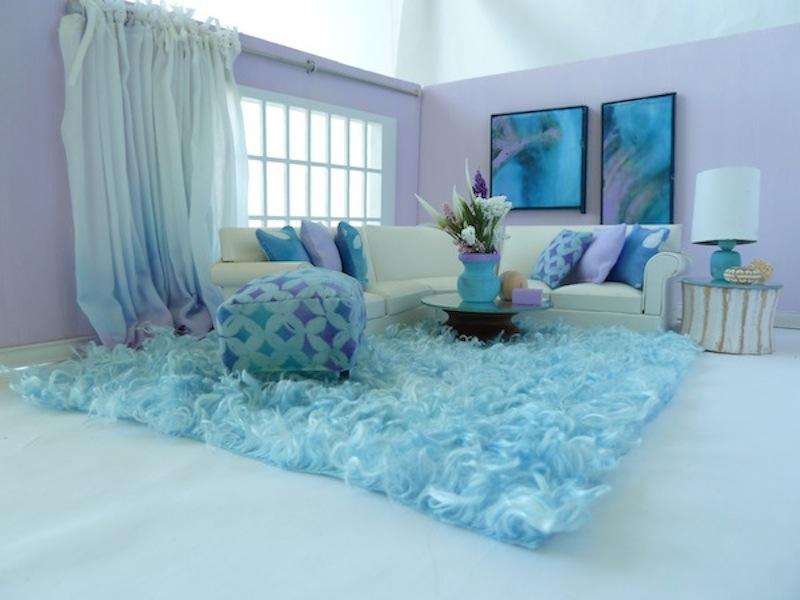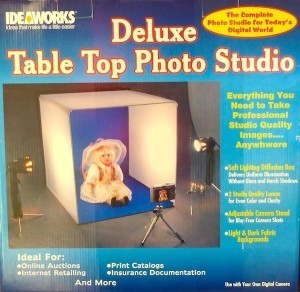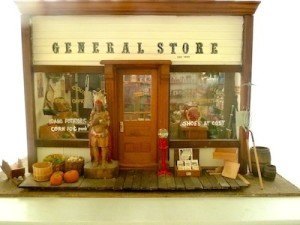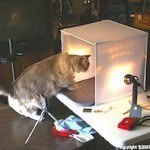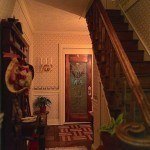Photographing Miniatures
Good photographs are critical in selling our wares. We work very hard to make the miniature items we love. Sometimes, not as much care is devoted to presenting them on the Internet. I hope this article, and a linked article on “Shining Article Photography,” will help you improve your close-up photography skills.
The Camera
The biggest challenge for many artisans is taking clear, well-lit pictures. My husband Patrick helps with photographing my work. We used an inexpensive compact digital camera for the pictures you see here. The most important requirement is the camera have Macro focus capability because you want to fill the frame of the picture with an image of the product. Therefore, in small-object photography it is often necessary to get close to the item. Nikon, Canon and and Panasonic all have compact digital cameras, with a macro-zoom feature, for sale online for well under $300.
Studio & Lights
The next important issue is to have a flexible “studio” set-up. As we use a compact digital camera to take the pictures, we were not about to spend big bucks on proper table-top lighting. I bought the Deluxe Table Top Photo Studio for $29.99 online. Sale price today online at Colonial Medical is $24.95, regularly $49.95.
To use it, we place a card table near a sunny window, careful not to let direct sunlight hit to object, which minimizes unwanted shadows. A gooseneck reading lamp with a daylight-balanced compact florescent bulb hovers above the “studio” if supplemental light is needed. Also, if it is a cloudy day, it warms up the light, taking some of the blue out of it.
Bigger Objects
My Aqua Accessory Ensemble (top picture) was too big to use the table-top studio. Incidentally, when cropped tighter, I get so many questions about this picture. Is it a real room? A room in a dollhouse? Neither. Widened-out like this, you can see it’s more like a movie set. I cut two pieces of foam core and taped them at a 90 degree angle, cut in the widow, paint the walls – and repaint them when needed. I got 3 accessory room ensembles out of this same set, a Peach color scheme and a Baby Nursery. I want to something with earth tones, so I’m thinking about the dessert Southwest.
After the “set is dressed,” which Patrick says is the proper term for hanging curtains, etc, I place the furniture and accessories where I want. That’s it. There’s plenty room on ehe open side to move the camera around, take wide shots or closeups. A pale yellow wall is in the background, far enough away to be out of focus. If you want to see how the pictures look on a sales page, go to the accessory landing on my website.
Shooting Through Glass? Don’t!
Try to avoid taking pictures through glass because glare is hard to control, and polarizing filters usually aren’t available on inexpensive cameras. They soak up too much light, anyway. To photograph the Will Hunt General Store, Patrick slid the glass off the top and held the camera right down in the scene. He was able to take stills and switch to its movie setting to pan the camera around. The cameras mentioned above have this capability.
I wanted to keep my great-father, Will Hunt’s, memory alive, and making this room box got me hooked on miniatures.. Click on the photo to watch the video, if you like. It’s a nice story.
Show Scale: A True Story
I mailed a famous-name, dollhouse, London department store shopping bag to a lady in Palm Springs. The description in Etsy state: “Dollhouse miniature shopping bag, 1:12 scale, measuring 1″ X 1.25”.
My Etsy shop has dollhouse miniature written all over the place. Yet when the lady received the bag, she was furious. “What is the little piece of worthless paper crap you sent me? You can’t do anything with it!” she emailed, and gave me a bad Etsy review.
My lesson: Don’t depend on visitors to your online shop reading the descriptions. Show the scale on at least some of the pictures on your page: pencils, coins, a finger pointing, anything.
So there it is. I hope this post helps you show your work in the best possible light … and save you grief from people who don’t read product descriptions.
Here’s that link to an article on “Shiny Object Photography.”
Susan


